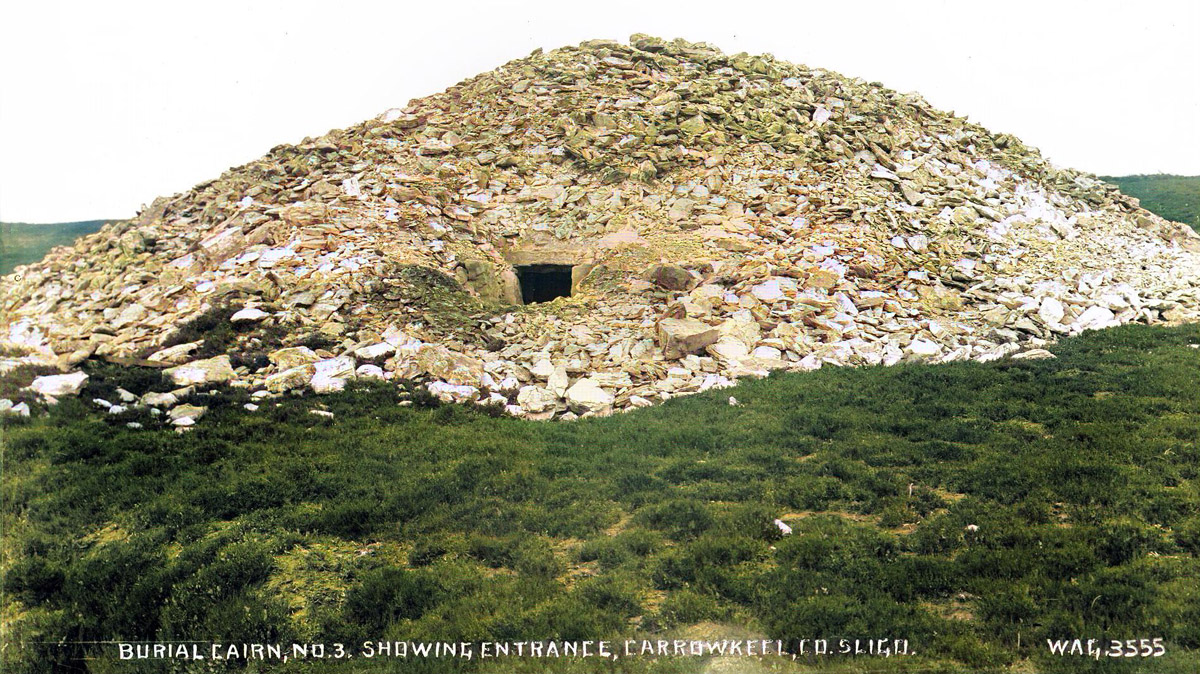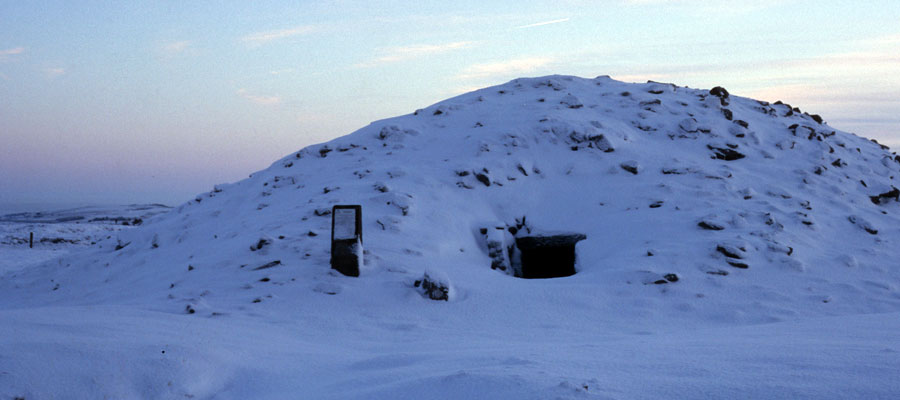Cairn K
Cairn K is located on the highest part of Carrowkeel mountain, about 300 meters south of Cairns H and G. Cairn K is an excellent early example of a classic cruciform corbelled chamber. The stones in the chamber are badly cracked; please do not climb on this or any other cairn if you visit.
The monument, like the other cairns, is built from a substantial mound of locally quarried stone. It has a diameter of about 21 meters, is some 6 meters high, and is surrounded by a thick layer of bog, which has covered any kerbstones which might surround the base of the cairn.
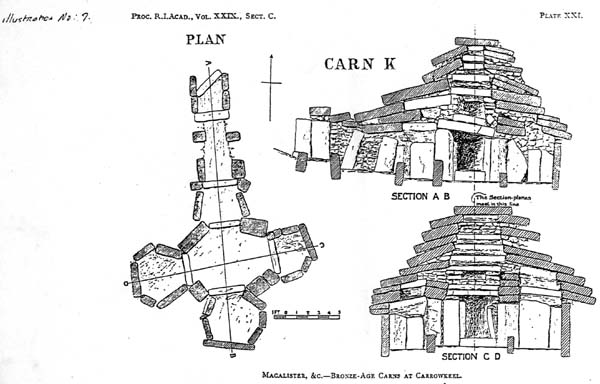
Up until a few years ago there were chunks of white quartz around the north face and entrance to Cairn K, but most has mostly been stolen by visitors. Quartz may have been used to cover the area around the entrance around focal monuments—Newgrange being a prime example. This also may account for the name of the mountains got their—Breac Sliabh means Speckled Mountain,; viewers standing on Knocknarea or any of the peaks of the Ox Mountains would have seen the cairns in Carrowkeel glittering in the evening light of the sun or moon. The quartz was quarried in the Ox Mountains, probably in the area around Croghaun, and would have been transported up river by boat.
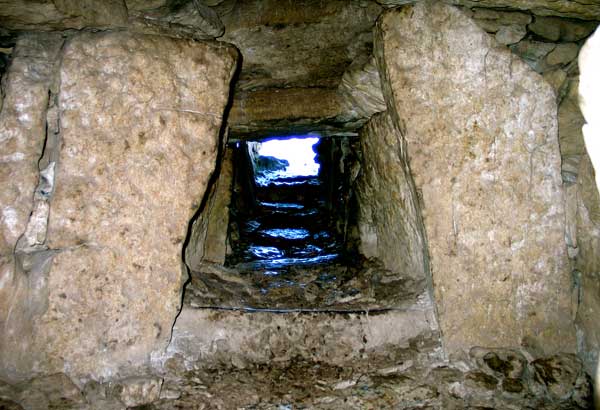
To enter requires crawling through the small square entrance. The passage is 6 meters long and leads into a fine cruciform chamber with a beautiful corbelled ceiling over 3 meters high. The lintels over the three recesses are cracked. The structure, built with slabs of limestone, is well designed and the interior remains dry after some 5,500 years. There are three spacious recesses off the chamber, with the one on the right larger than the others.
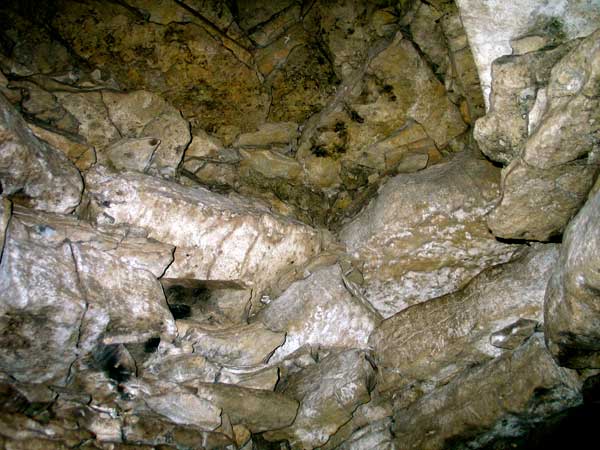
In the back of the right-hand recess is a triangular shaped stone with a pointed top which is known as the Croagh Patrick Stone, due to its profile which is shaped like the Reek. Croagh Patrick is clearly visible on a good day, about 75 km away to the southwest, and on two days of the year, Samhain and Imbolc, the sun when viewed from Cairn K, drops behind the Reek.
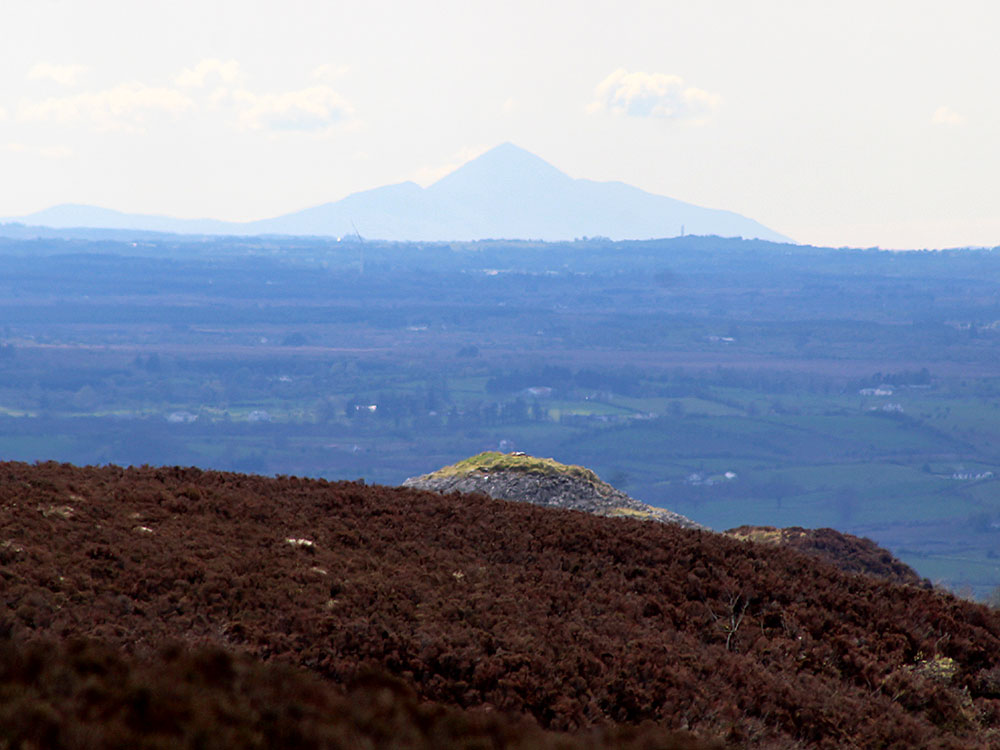
Cairns K, L and the stone structure mentioned below are all on this 'Croagh Patrick axis' which extends across Lough Arrow to Shee Lugh on Moytura in the other direction.
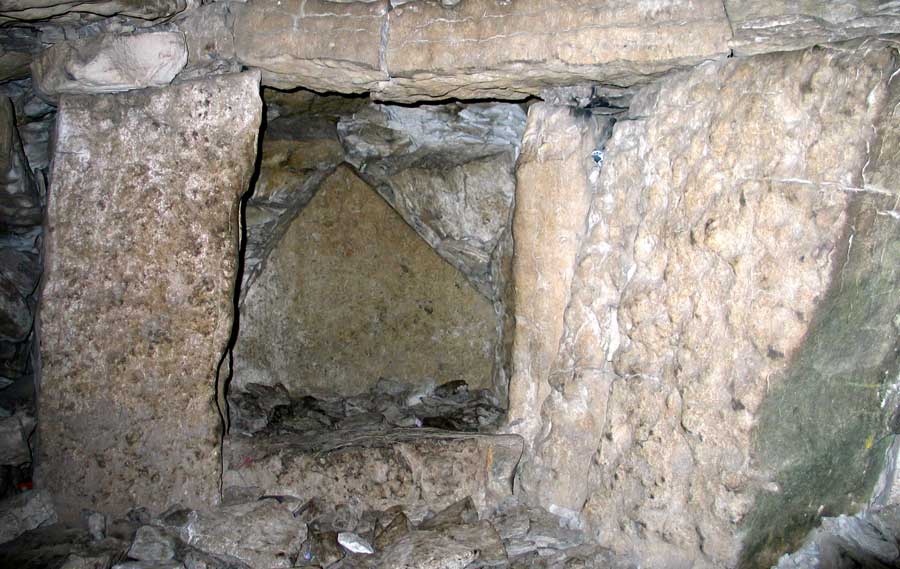
The passage and axis of the chamber is oriented directly to Queen Maeve's Cairn on the summit of Knocknarea, as are Cairns E, G and B. At about 15° west of north, the chamber is oriented much too far north for the sun or moon to have ever shone into the chamber. The summits of both Queen Maeve's Cairn and Cairn K are at the same altitude above sea level.
The items found during the excavation of Cairn K in 1911 were typical of the finds in the other cairns: pieces of the neolithic pottery, known as Carrowkeel Ware since that time; a mixture of cremated and unburned human remains, chalk balls, antler pins and pendants.
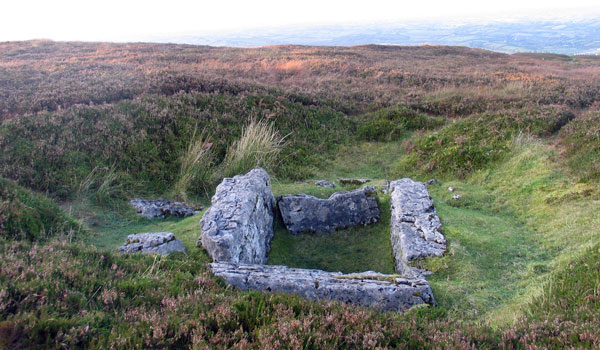
A few meters east of Cairn K is a small stone box or cist, originally covered with a large stone slab, which was smashed by 'rabbit hunters' according to Macalister. The long axis of the cist, and door slab are oriented to Knocknarea. The shattered remains of the lid or capstone, scattered around the entrance, indicate an unrecorded episode of treasure-hunting before the 1911 investigations. The lack of weathering on the chamber slabs suggest that the capstone was smashed recently enough, posibly in the 1800's.
The structure may be a younger version of the chamber at Listoghil in Carrowmore.
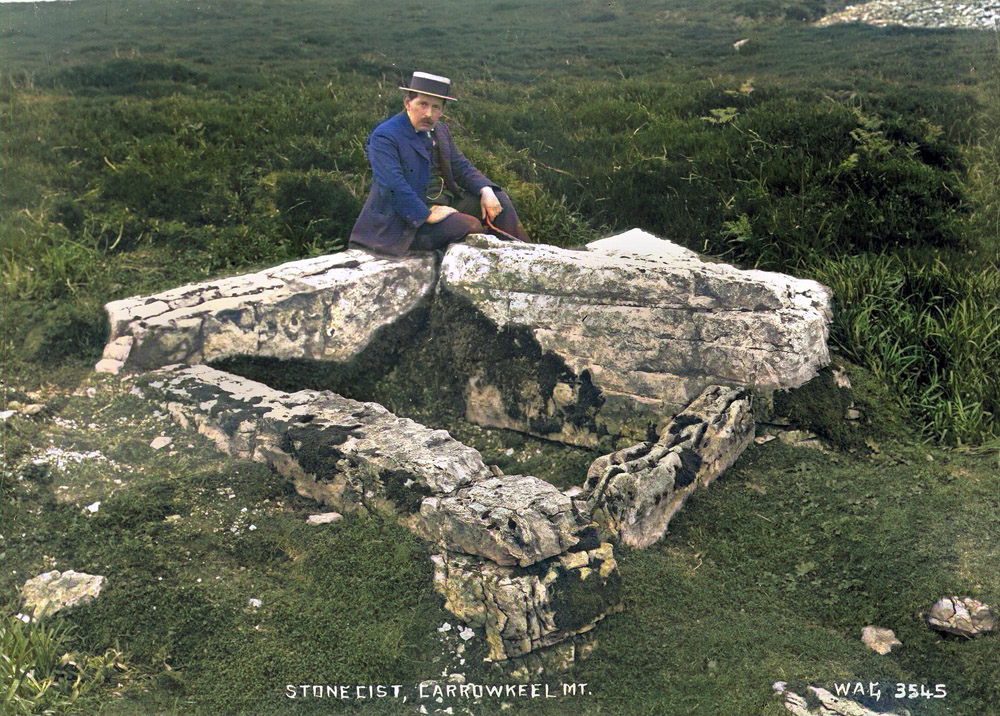
Cairn L
Cairn L is an unexcavated structure a few meters to the west of Cairn K, with no visible remains of a passage or chamber. K and L are a pair, like G and H, C and D, E and F, M and N and O and P. Macalister and company looked at the site in 1911, but decided it wouldn't repay the effort of opening the cairn.
There are a few slabs of limestone visible in the cairn which suggest the presence of of some form of chamber or cist. The cairn is covered with peat, so the actual size is difficult to make out, but a diameter of 19 meters and height of 5 meters has been recorded, which makes it nearly as big as Cairn K. This is the natural highest point of the mountain, though the top of Cairn K is higher. In essence, the two cairns are built side by side.

